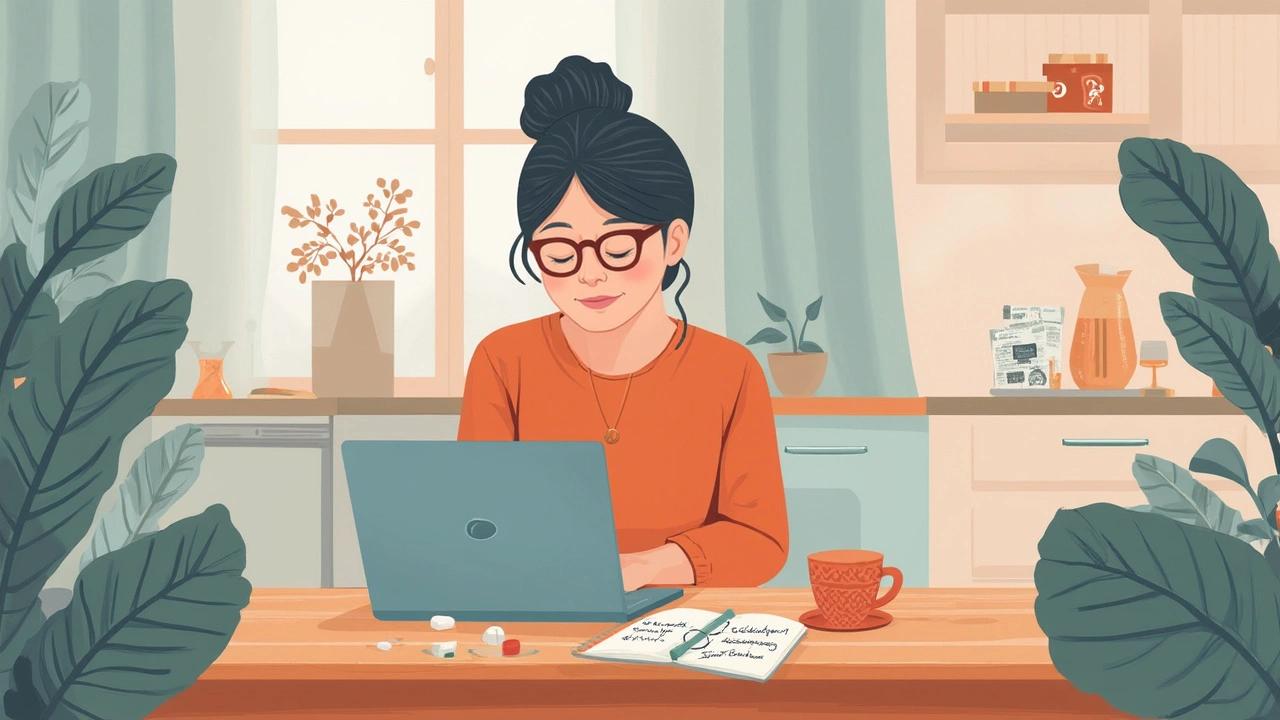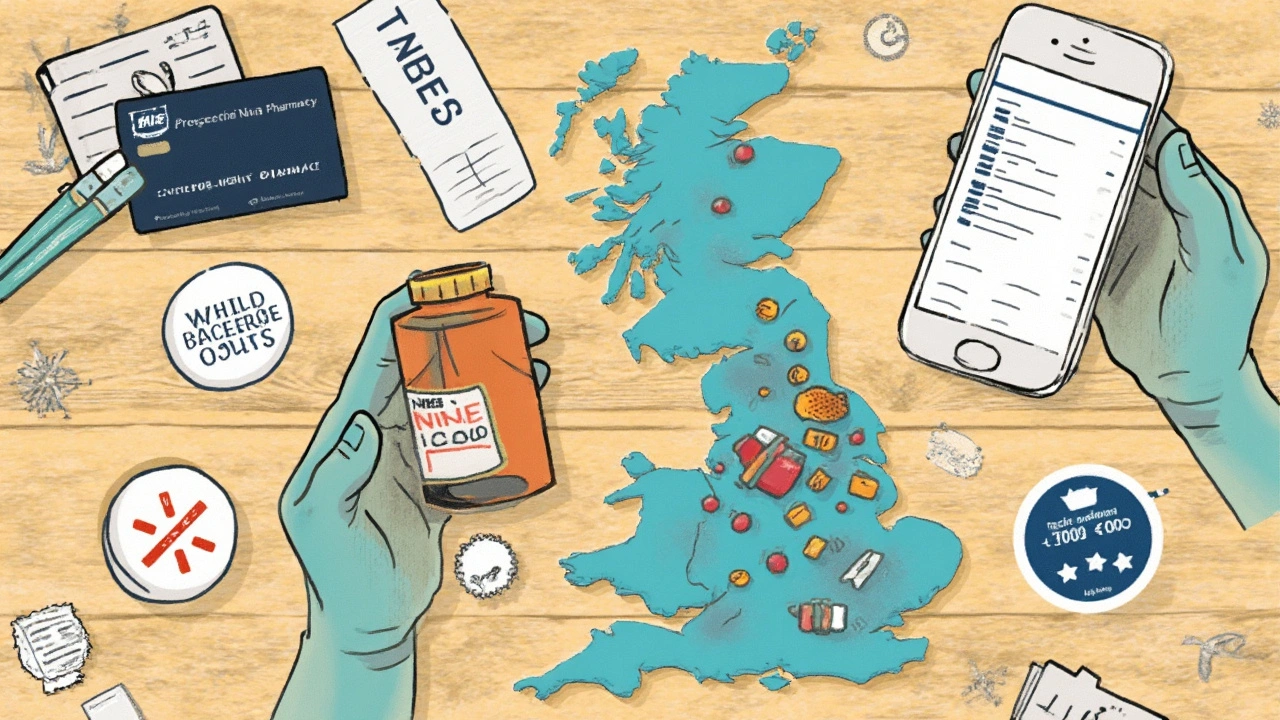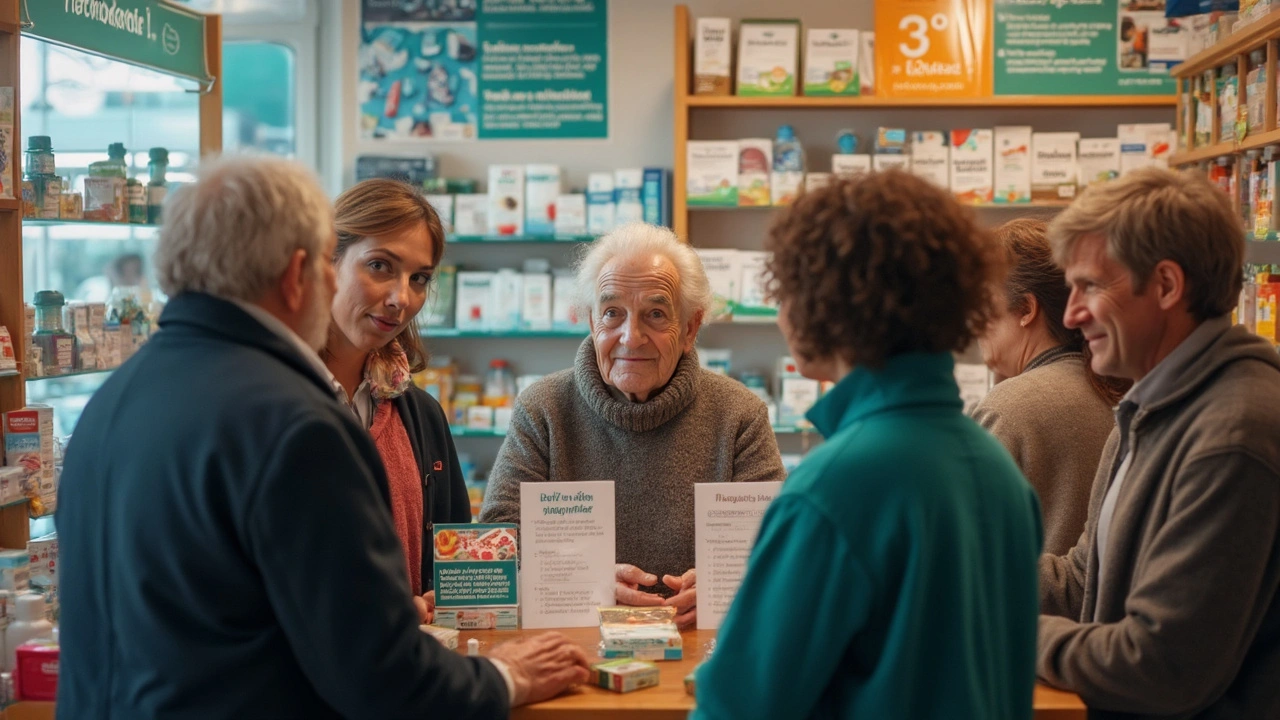Ever stood at the pharmacy counter, wallet in hand, just hoping your insurance or that little discount card would work its magic? Medication prices are dizzying. American families spend more than $1,200 each year out of pocket for prescription drugs. I’ve experienced that sting, especially during allergy season, when my daughter Liora and our old cat Oliver both needed meds! But here's the truth: you actually have more power over your medication costs than you think. Let’s get into strategies that pharmacists rarely talk about, drug companies hope you ignore, and that can take real dollars off your next Rx bill.
Maximize Manufacturer Discounts and Patient Assistance Programs
Most people never hear about the deals straight from the drugmakers. That’s a missed opportunity. If your prescription is brand-name and newly released, the manufacturer likely has a coupon or savings card—sometimes slicing off hundreds. Huge players like Pfizer, Eli Lilly, and Novartis run patient assistance programs (PAPs) aimed at uninsured or underinsured folks. Keep in mind, eligibility varies. Many programs focus on income, but others consider your insurance situation. An honest chat with your doctor or pharmacist can help uncover what’s out there.
Let’s be real, the system isn’t easy to navigate—it’s not like finding a promo code for sneakers online. Some programs ask for forms, proof of income, or a supporting statement from your doctor. Stick with it; the payoff is often big. In 2024 alone, patient assistance programs distributed over $8 billion in free or steeply discounted meds. My neighbor’s insulin went from nearly $600 a month to zero after applying for a manufacturer program. The hardest part can be taking that first step—most companies hide these links on the tiniest corners of their websites. If you're not sure where to start, head to the official site for your medication or visit a centralized resource like NeedyMeds.
Pro tip: Some doctor’s offices and hospital clinics keep a stash of paper coupons and savings cards, especially for popular drugs like asthma inhalers or cholesterol meds. Ask directly; no one offers unless you do. And once approved, mark your calendar—some require reapplying every year.
Shop Around: Pharmacies, Online Tools, and Compounding Options
It blows my mind how two pharmacies, even on the same block, can have wildly different cash prices for the exact same drug. One might sell a generic drug for $15, while another asks $70. Price shopping on prescriptions is no different than flights or hotels. Use prescription price comparison tools before you leave the house. Sites like SingleCare, Optum Perks, and WellRx let you check and print coupons at competing stores.
I know what you're thinking—aren’t all those apps the same? Not at all. Coupons and discounts shift daily because of new contracts, so always check several. Did you know some grocery store pharmacies (think Kroger, Costco, or Publix) have their own deeply discounted Rx lists? For example, Publix has offered certain antibiotics and blood pressure meds for free with a doctor’s prescription. Don’t assume a chain pharmacy is more expensive, though—sometimes their in-house discount beats online coupons.
If you’re on a medication that’s not common, or you have allergies to certain fillers, look into compounding pharmacies. These hidden gems can customize dosages, swap out ingredients, and—best of all—sometimes underprice big-box stores for tailored meds. Compounding isn’t for everyone, especially for drugs with strict dosages, but it offers a route for people with special needs or for pets (Oliver, I’m looking at you). These pharmacies also sometimes whip up pediatric formulations that taste better or are easier for kids to swallow, avoiding the need for pricey brand-name syrups. Just confirm your insurance covers compounding, or ask for their best cash price—it’s often negotiable.
Don’t forget to check out thorough guides on ways to save on prescriptions—sometimes one overlooked tip leads to hundreds saved per year.
Mail-order might sound “old school,” but insurers and pharmacy benefit managers (PBMs) often give deeper discounts for 90-day supplies sent right to your door. I switched two of my long-term meds last year and cut my monthly bill in half—all because I asked my doctor to write a 90-day prescription instead of 30.

Work the Insurance System to Your Advantage
If you’re insured, don’t assume any old pharmacy will be cheapest. Insurers contract with “preferred” pharmacies, and out-of-network fills could double your cost. That means walking a block extra or waiting an extra day might save real cash. Call your health plan’s number or log into your benefits portal. Look up which pharmacies are “preferred” for your plan. Some plans even offer special programs for chronic meds called “specialty pharmacy” deals—these come with perks like home delivery and phone consultations with a pharmacist.
The world of prior authorizations and formulary tiers can feel like a Kafka novel, but there’s a method behind the madness. If a drug is denied, press for a formulary review. This is when your doctor makes the case that no other prescription is working for you. About one in three appeals actually overturn the original denial, especially if the doctor provides enough documentation. Don’t be afraid to appeal—insurers sometimes reverse course just to avoid a drawn-out process.
Another trick: ask your doctor if you can “split tablets.” Some medications cost the same for 20mg as 40mg strength. If it’s safe (not all pills can be split—ask your pharmacist), your doctor writes for the higher dose, and you use a pill splitter at home. Savings can be massive, especially for cholesterol and blood pressure meds.
Also, generic drugs save Americans nearly $300 billion each year, but not all “generics” are priced equally. Your pharmacy may stock one manufacturer that’s pricier than another; ask if a cheaper version can be sourced. Pro tip: Check if your insurer has a mail-in rebate for trying a lower-cost generic before jumping to pricier options. These offers are less advertised but fully legit under most plans.
Dive Into Nonprofit Pharmacies, State Programs, and Drug Reuse Initiatives
Traditional pharmacies aren’t your only ticket. Nonprofit organizations like Rx Outreach offer discounted prescription meds shipped nationwide, with no insurance required. California’s CalRx program has started producing affordable generics of high-cost drugs like insulin. Other states are piloting free or ultra-cheap pharmacies to fight drug deserts—always worth a quick search for your area.
Prescription drug recycling might sound odd, but 41 states now support “drug repository” programs. These distribute unused, unopened, and unexpired meds (donated from hospitals, long-term care, and individuals) to patients in need. For example, Iowa’s SafeNetRx handed out $55 million worth of drugs last year alone. There’s paperwork and sometimes a waitlist, but it’s a lifesaver if you can’t afford your treatment.
Patient advocacy groups sometimes have funds to cover costly medications for specific conditions—think HIV, cancer, epilepsy, or rare diseases. They can connect you with grants, co-pay cards, or legal help fighting insurer denials. Your local hospital’s social worker probably knows these options but might not offer them unless you ask directly. I learned the hard way after Oliver needed a pricey thyroid med—after weeks of phone calls, an animal rescue organization picked up most of the cost.
Medication costs are no joke for families, single adults, and anyone in between. Don’t underestimate the impact of these nonprofits, especially if you slip through the cracks of traditional insurance or assistance programs.

Implement Everyday Tactics: Real Stories, Real Tools
Tiny everyday moves can rack up real savings. Never just “auto-refill”—double-check dose and brand every time, making sure the pharmacy didn’t quietly upcharge or swap to a pricier version without asking. Use calendar reminders to check if a medication is coming up for renewal and research new discounts before refill day.
Befriend your pharmacist. Ask which brands or generic manufacturers they recommend for quality and price. Some pharmacists will actually flag upcoming price hikes or steer you to a better option. I know a mom at our local school who saved $300 in allergy meds in one season, all because her pharmacist suggested a different pharmacy across town—wild, right?
Set up an “Rx Savings Folder” (either paper or on your phone) with coupons, receipts, and notes on what worked. If you see a new doctor or get a new insurance plan, you can quickly see what to ask about. Even jot down the names of prescription assistance programs or discount cards you’ve used. That system saves a ton of time at every renewal.
If you are juggling medications for your kids, pets, or yourself, keep each person's needs and allergies updated. This helps both the doctor and pharmacist spot substitutions that won’t wreck your body or budget. I keep Oliver’s and Liora’s med lists in my phone—one less headache at the pharmacy counter.
Sometimes you’ve just got to ask the awkward question straight up: “Is this the cheapest way to get this prescription?” Most busy pharmacists won’t offer info unless you push. Same for doctors—don’t just take the sample box or a branded recommendation without asking for generic or lower-cost alternatives. If you get a “no,” ask again at your next checkup—the landscape changes constantly, especially as new drugs go generic.
| Strategy | Potential Savings (%) | Best For | Notes |
|---|---|---|---|
| Manufacturer Coupons/PAPs | 30-100% | Brand-name meds | Varies by drug, often for uninsured/underinsured |
| Price Comparison Tools | 10-80% | All prescriptions | Updated daily, shop multiple tools |
| Compounding Pharmacies | 5-50% | Customized meds/allergies | Insurance may not cover; negotiate cash price |
| Nonprofit Pharmacies | 30-90% | No/low insurance, low income | State and national orgs available |
| State Drug Repositories | 100% | Uninsured or low-income | May have waitlists/paperwork |
| Insurance Appeals | Varies | Denied meds | 1 in 3 appeals is successful |
Start with what fits your life, budget, and situation—try one new approach with your next prescription, and don’t give up after one roadblock. Companies, insurers, and pharmacies aren’t always looking out for your wallet. But when you know where to push, whom to ask, and how to track the shifting world of discounts and alternatives, you can actually outsmart the system and keep your health—and your finances—on track.


Everyone thinks coupons are a miracle but they’re just marketing tricks
I appreciate the thorough breakdown; it really demystifies a complex system. The emphasis on manufacturer coupons and patient assistance programs is especially helpful. Many people overlook the paper coupons that doctors sometimes keep in their offices. Checking price comparison tools before filling a prescription can save a significant amount. Overall, these actionable steps are realistic and worth sharing.
Honestly, the part about asking your pharmacist for a stash of paper coupons is a game‑changer. I’ve seen friends save hundreds by simply inquiring. It’s also vital to remember that not every generic is created equal-shop around. The tip on mail‑order 90‑day supplies really cuts costs for chronic meds. Keep the energy up, folks, these hacks work.
Yo, love the vibe! I’m all about hunting down those hidden discounts, even if it means a little extra walking. The compounding pharmacy angle is fresh – many don’t know you can get a cheaper mix for pets too. I’ve tried SingleCare and found my asthma inhaler dropped from $45 to $12. Keep sharing, we’re all in this savings game together.
This guide is solid :) The suggestion to use multiple price‑comparison sites really hits home – they change daily. I also like the reminder to ask doctors about splitting tablets when it’s safe. The nonprofit pharmacy options could be life‑saving for those on a tight budget. Thanks for laying it out in such a clear way! 👍
Reading through this post felt like finding a hidden treasure map for prescription savings.
First, the reminder that manufacturers often provide coupons directly on their websites is something I never considered before.
I’ve started visiting the drug’s official site each time I get a new prescription and have already saved dozens on my blood pressure meds.
Second, the tip about checking multiple price‑comparison tools such as SingleCare, Optum Perks, and WellRx is pure gold because the discounts can vary dramatically from day to day.
I made a habit of opening those apps on my lunch break and printing a coupon before heading to the pharmacy.
Third, the insight that grocery store pharmacies sometimes offer free or deeply discounted medications surprised me; I never thought to look at the local Kroger pharmacy.
When I tried it, my generic antibiotic was $0 at the checkout, which felt like winning the lottery.
The section on mail‑order 90‑day supplies is especially relevant for anyone on chronic therapy, as the per‑day cost often drops by half.
I asked my doctor for a 90‑day script for my thyroid medication and the savings were immediate.
Additionally, the advice to split tablets safely after confirming with a pharmacist opened another avenue of cost‑cutting for me.
I now split my 20 mg blood pressure pills into two 10 mg doses, halving the cost without any side effects.
The discussion about patient assistance programs, especially for brand‑name drugs, is vital because eligibility can be broader than you think.
I helped a friend apply for a Pfizer assistance program and his insulin cost went from $400 a month to $0.
Compounding pharmacies, while not for every drug, can provide custom formulations that are both cheaper and better tolerated for patients with sensitivities.
I reached out to a local compounding shop for a pediatric liquid version of a medication and the cash price was 30 % lower than the brand name syrup.
All in all, these practical steps empower patients to take control of their medication expenses and prove that the system isn’t as opaque as it seems.
Don’t be fooled by glossy ads; the only way to truly lower costs is to demand transparency from every provider.
Great points, Brian. I’ve also found that keeping a digital “Rx folder” helps track which coupons actually work, saving time and money. Sharing these habits makes a real difference for everyone.
Jessica you nailed it – asking the pharmacist directly can uncover hidden savings. It’s a simple step that many overlook.
Alan love the energy 😊. Walking a few blocks to a different pharmacy isn’t a hassle when it saves you $$$. Keep the optimism alive!
While the enthusiasm is appreciated; one must also critique the systemic failures that render patients dependent on fleeting coupons!!! The corporate model thrives on obscurity; we need structural reform!!!
Lauren, your passion is clear, but perhaps focusing on concrete steps-like lobbying for price caps-might be more effective than venting.
Friends, think of your prescription plan as a vibrant tapestry; each thread-be it a coupon, a mail‑order service, or a nonprofit-adds color and strength. Embrace the diversity of options and weave them into your routine for a richer, more affordable health journey.
Honestly, most of this advice is just re‑packaged corporate propaganda pretending to care while keeping patients in the dark.
Sometimes I wonder if saving money on meds is just another societal illusion, a never‑ending quest for meaning in the aisles of pharmacy counters.
I’ve read your tapestry analogy, and while poetic, I’m more interested in a straightforward list of actionable steps.
Consider the act of seeking cheaper medication as an exercise in ethical autonomy; it reflects our deeper responsibility to steward personal resources responsibly.
Oh great, another checklist of ways to outsmart Big Pharma-because nothing says “I’ve got my life together” like juggling coupons like a circus performer.